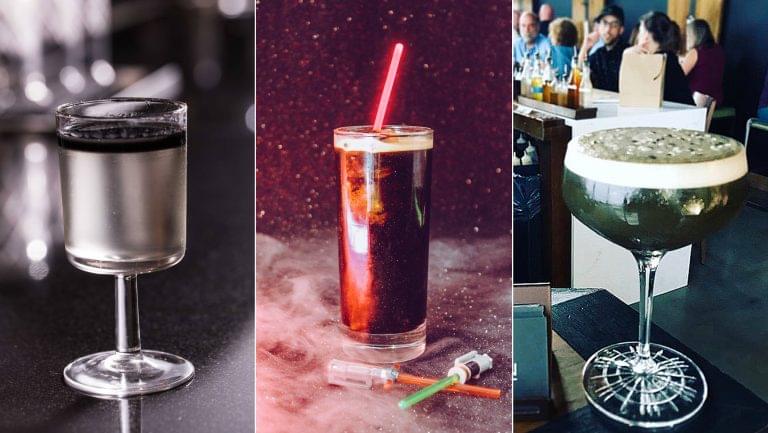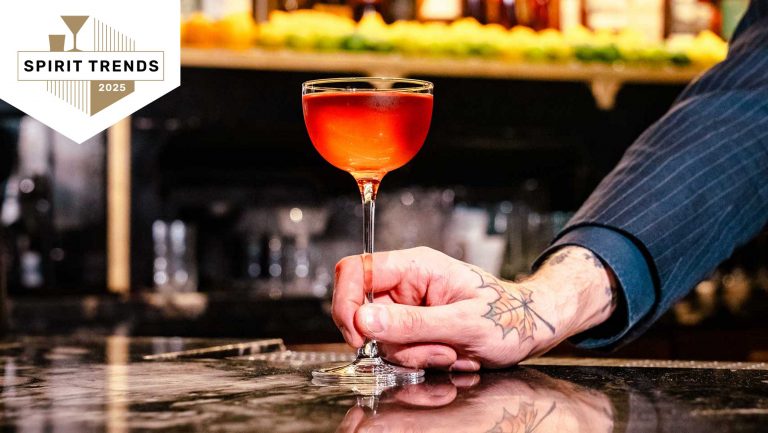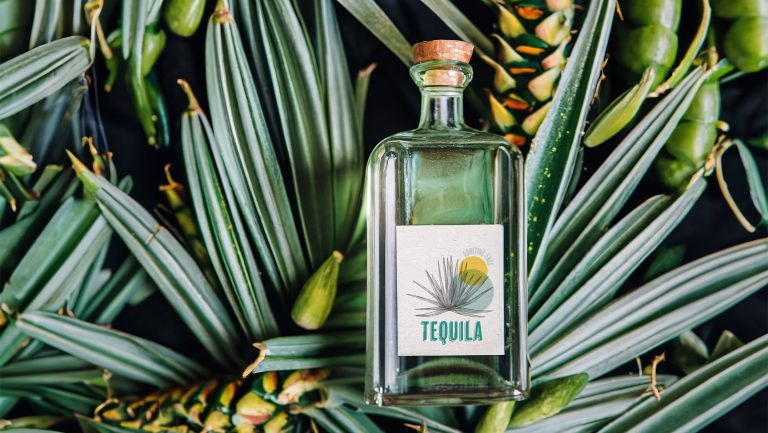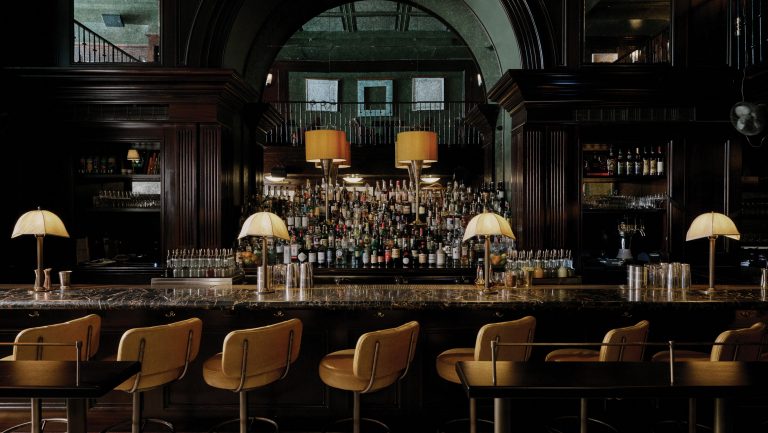The black food trend—black bagels, ice cream, cupcakes, “detox” lemonade—has come to cocktails as well. For customers, ordering black drinks “gives a sense of daring nature to someone who wants to try something exotic and new,” says Mark Cooney of Detroit’s modern American restaurant and bar Wright & Company.
From coast to coast, and in the heartland, bars are seeing black cocktails take off. Terry Williams, director of operations for Anvil Bar & Refuge in Houston, offers another explanation: “Visually stunning drinks do well. Black cocktails are buzzing right now—the great activated charcoal debate and all.”
Ah, yes—that. While black cocktails may be extremely Instagram-worthy, the activated charcoal often used to give the drinks their inky hue could have serious health consequences. Activated charcoal can adsorb oral medications (and poisons, in the case of drug overdoses, for which it’s commonly used by emergency room doctors) so that the drugs never reach the bloodstream. It’s an uncomfortable fact that the sexy obsidian-colored old-fashioned you serve to a customer may affect the medication that person has taken shortly before, or after, imbibing.

Don’t miss the latest drinks industry news and insights. Sign up for our award-winning newsletters and get insider intel, resources, and trends delivered to your inbox every week.
While one could add a medication-interaction warning about activated charcoal, like an allergen label on a drink menu, there are other ways to color a drink black that don’t require a scary-sounding note. SevenFifty Daily asked bartenders around the country for cocktail-darkening alternatives and learned that black sesame seeds, cuttlefish ink, and black food coloring are among the ingredients being used.
Black Sesame Seeds
Black sesame seeds at high concentrations can turn drinks anywhere from dark gray to near black. At The Cosmopolitan Hotel & Casino in Las Vegas, the property’s resident mixologist, Mariena Mercer Boarini, has made ink from black sesame seeds and used it to color syrups and dye ice spheres.
Black sesame powder is commonly found in Asian markets, where you can also find black sesame desserts and drinks, according to Boarini. “It comes in both cans and as a powder,” she says. “There are many different brands, so you’ll have to play with it for a bit to get a solid recipe.” When using sesame powder, Boarini recommends applying heat to the liquid it’s being blended into, to help prevent a chalky texture. “The flavor is beautiful—very floral yet earthy,” she says, adding, “It also makes a killer ice cream.”
If you don’t use the powdered form, sesame seeds tend to sink to the bottom of drinks, leaving gloppy remnants in the glass. It’s therefore important to blend them for an extended period, according to Terry Williams, the director of operations for Anvil Bar & Refuge in Houston. There, bartender Qwesha Byrd recently created the Benne Benjamin, a black cocktail containing three rums (including a dark-colored blackstrap rum), black sesame, coconut, and grapefruit, served over crushed ice in a tulip glass. “The idea was not only to create a black-colored drink,” Williams says, “but also to incorporate that intense umami flavor that comes along with the use of sesame.” The sesame seeds are toasted first and then ground. They are then cooked into a rich simple syrup, blended again, and then blended one last time with coconut cream. “The whole process keeps the cocktail from separating,” says Williams, “as well keeping [it] from being too grainy or mealy.”
At The Brixton in Babylon, New York, beverage director Patrick Capellini also uses black sesame seeds, in this case to darken the Seinfeld-referencing Super Terrific Happy Hour, a winter-menu cocktail with whisky-ginger tincture, yuzu juice, cherry-bark bitters, black sesame orgeat, and egg white, served up. Says Capellini, “I think the popularity of black cocktails has to do with a sort of shock value—when you see one, you’re intrigued.” To make the syrup as dark as possible, he says, he uses “a ton” of black sesame seeds roasted with sesame oil, steeped in water, and blended with sugar. The resulting dark-hued mixture is then heavily strained to remove sediment.
Cuttlefish Ink
At The Berkshire Room in Chicago, general manager Christian Hetter created a riff on the Vesper, served up. It appears mostly clear, except for a float of Old Tom Gin mixed with cuttlefish ink that creates a dramatic color contrast in the glass. While menus often refer to “squid ink,” such as that used in squid-ink pasta, the substance is actually cuttlefish ink, according to Hetter. About the ink’s saltiness, he says, “I embrace it and built the drink around that briny quality. A little ink goes a long way, though. It should be subtle and complementary, not overpowering.” The drink calls for only a quarter ounce of the ink for the float, so he makes it in small quantities and keeps it well chilled to help control the brininess. To prevent separation in the glass, Hetter uses an immersion blender to mix the the cuttlefish ink with Hayman’s Old Tom Gin.
Wright & Company also recently offered a popular seasonal cocktail using “squid” ink. The Kiss at Midnight features Plymouth Gin, the ink, and rose hip–and–black currant syrup and is served in a Champagne flute with a Campari foam on top. The drink’s creator, Mark Cooney, notes that the ink has a tendency to separate in cocktails. “I found this to be easily remedied by adding some xanthan gum,” he says, “and using an immersion blender to incorporate the ink, gin, and binding agents.”
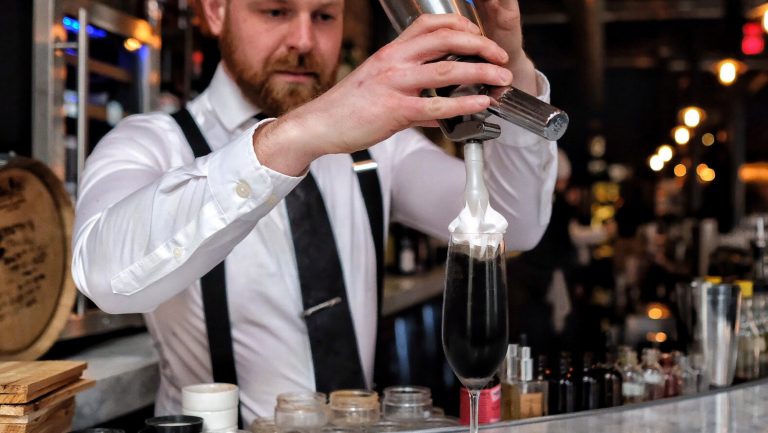
Black Food Coloring
The globe-trotting bartender Tom Walker, currently at Pig Bleecker in New York City, says he’s made many Manhattan- and Negroni-style cocktails appear black with the addition of caramel-colored ingredients like Fernet Branca Menta, but other bartenders have foregone coloring agents with flavor, opting instead for flavorless food coloring.
In Sausalito, California, the contemporary Mexican restaurant Copita Tequileria y Comida recently added a cocktail called the Black Panther to its menu, made with mezcal, lime, agave, and kumquat, served tall over ice. To make the drink black, bar manager Jenny Schneider simply adds a small drop of all-natural black food coloring to it.
At restaurant Datz in Tampa, beverage director Morgan Zuch created The Dark Side last year in honor of the May 4 Star Wars Day. The drink was black and shimmery with dark rum, chocolate liqueur, black glitter gel syrup, and milk stout. The syrup was edible glitter gel that’s typically used for baking, with water and sugar added to make it blend more easily.
While it’s hard to know the specific affect activated charcoal might have on customers’ medication at cocktail-size doses, one easy way to avoid any danger is to avoid the ingredient entirely. As shown by these bartenders, there are some imaginative alternatives from which to choose.

Dispatch
Sign up for our award-winning newsletter
Don’t miss the latest drinks industry news and insights—delivered to your inbox every week.
Camper English is an international cocktails and spirits writer, speaker, and consultant, with a focus on the science of booze and big clear ice. His work has appeared in Popular Science, Cook’s Science, Whisky Advocate, Saveur, Details, the San Francisco Chronicle, and many other publications.

